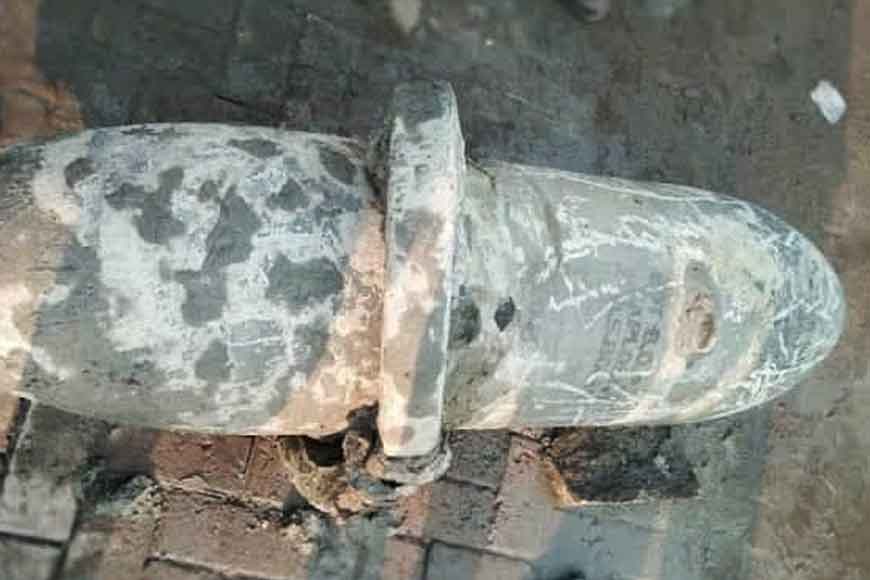On Hiroshima Day, looking back at Japan’s assault on Calcutta
Representative Image
IGiven Calcutta’s status as the ‘second city of the British Empire’, it should come as no surprise that it became a target for Japan at the height of World War II (1939-45). A paranoid British-Indian government clearly believed very strongly in the possibility of a Japanese invasion of Calcutta, and their fears came true as Japanese bombs began raining down on the city in 1942, the only major Indian city to suffer such an assault.
The reason we bring up this attack on Hiroshima Day (to commemorate the atomic bombing of August 6, 1945) is to remind ourselves of the horrors of war, and how the world cannot afford another Hiroshima or Nagasaki. The bombs that Japan dropped on Calcutta and elsewhere were returned a hundredfold with Little Boy and Fat Man, the atom bombs that ravaged Hiroshima and Nagasaki respectively. At the time, many undoubtedly felt that Japan had rightly been paid back in its own coin, but over the ensuing decades, we have all come to realise the terrible human and material cost of those bombs.
In 1938, however, as the British Empire began preparing for war with Hitler’s Germany, this cost was certainly not part of the calculations. Like many other parts of the empire, Calcutta was introduced to air raid sirens, air raid drills, and other preventive war-time manoeuvres in anticipation of aerial attacks from Axis forces.
The only power that the British had to fear in Asia was imperialist Japan, whose colonising instincts were, if possible, even stronger and more ruthless than that of Britain. And since the beginning of the war, Japan had steadily increased its focus on Allied territories in South and Southeast Asia, including India and specifically, Calcutta.
Calcutta Port in particular formed the backbone of Allied supply routes to China and thence to Burma, which was then under Japanese control. Needless to add, among the most frequent targets of Japanese air raids was Khidirpur dock. The British, who had been fairly certain that their Singapore citadel would prevent the Japanese marching westward to India, soon realised how mistaken they were. With the fall of Pearl Harbor in 1941, Japan had been rampaging across islands in the South Pacific Ocean and South China Sea. And as the British surrendered Singapore on February 15, 1942, the Japanese army began its usual massacre of the local population as Britain typically rushed to evacuate its own citizens.
 Kolkata Port Trust recovered a World War II bomb during dredging at Netaji Subhash Port of Kolkata
Kolkata Port Trust recovered a World War II bomb during dredging at Netaji Subhash Port of Kolkata
In March, Rangoon (the capital of Burma) fell to Japan too, resulting in a flood of Bengali refugees from the city to Calcutta, bringing with them horror stories of the Japanese treatment of a conquered population.
Despite this, the initial British military response to a Japanese threat to Calcutta was sluggish. The air defence system was practically non-existent, and aside from the few basic cautionary measures, and the formation of a half-baked Air Raid Patrol (ARP) corp, nothing had been done to boost the city’s ground or air fortifications.
Instead, the administration was busy clamping down on the growing nationalist sentiment among Calcuttans, who had realised that the further Japan pushed Britain onto the backfoot, the greater India’s chances of throwing off British rule. This feeling was strengthened by the activities of Netaji Subhas Chandra Bose, whose radio broadcasts from Tokyo and Singapore became rallying cries for Indian nationalists.
Parallely, a food crisis was looming on Bengal’s horizon, fuelled by both British ineptitude and a determination to deny the Japanese army a possibility to secure rations in the event of an invasion. You can read about how this led to the horrific Bengal famine of 1943 here.
On midnight of December 20, 1942, Calcutta awoke to the screams of descending Japanese bombs as warplanes flew over the city. It was the first in a series of attacks that were to continue until 1944, causing widespread destruction of lives and livelihoods. Contemporary accounts record as many as 130 bombs being dropped on Calcutta, killing and maiming hundreds, and as recently as 2019, a 500-kg WW II bomb was discovered in the river during dredging operations at the port. Who knows how many more still litter the riverbed.
Realising the need to strengthen the city’s air defence, American troops poured into Calcutta, and as the bombings intensified, the city was put under curfew – with a complete ‘blackout’ (power cuts, windows covered with black paper), after sunset, since the Japanese attacked by night. The night sky often witnessed ‘dogfights’ between British and American fighter aircraft on the one hand, and Japanese warplanes on the other. Red Road became a landing strip for American planes, while oil tankers to refuel them were parked on the Maidan.
The bombers of the Imperial Japanese Army Air Force (IJAAF) finally forced the British authorities to sanction the use of huge balloons (blimps), comprising the 978 Balloon Squadron led by Squadron Leader Robert Wallis Beresford. The blimps were usually attached to the ground by several steel cables, which fanned out and prevented Japanese bombers from flying low to hit their targets. If they tried, they would become entangled in the cables and crash.
The air raid sirens (warning and all clear) that sounded across Calcutta and its suburbs during the bombings continued to operate for many decades to come, right upto the 1990s, though they had by then become a handy way for people to tell the time. But the far more important legacy of the Japanese bombings was the realisation in Bengal that the once mighty British were showing signs of breaking, and the time had come to make one great, final push for freedom.











